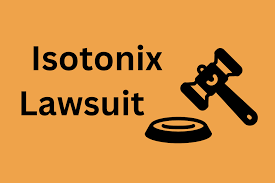Understanding the Connection Between Shingles and MS

What Are Shingles and Multiple Sclerosis?
Shingles, also known as herpes zoster, is a viral infection characterized by a painful rash that occurs when the varicella-zoster virus, which causes chickenpox, reactivates in an individual’s body. After an individual recovers from chickenpox, the virus remains dormant in the nervous system. However, it may reactivate later in life, often triggered by stress, immunosuppression, or increasing age. The most common manifestation of shingles includes a localized cluster of blisters that cause itching and pain, typically affecting one side of the torso or face. Additional symptoms may include fever, headache, and fatigue. Risk factors for developing shingles primarily include age (particularly those over 50) and certain medical conditions that compromise the immune system, such as HIV or cancer.
Multiple sclerosis (MS), on the other hand, is a chronic disease of the central nervous system that occurs when the immune system mistakenly attacks the protective covering of nerve fibers, known as myelin, leading to communication problems between the brain and the rest of the body. The exact cause of MS is still unknown, but it is believed to involve genetic predisposition, environmental factors, and viral infections. MS manifests in various forms, Shingles and MS including relapsing-remitting MS, secondary-progressive MS, and primary-progressive MS, which can present an array of symptoms such as fatigue, difficulty walking, numbness or tingling, and vision problems. Each type can vary in severity and pattern of symptoms, significantly impacting an individual’s quality of life.
Understanding these two distinct medical conditions, shingles and MS, is crucial before exploring their potential interconnections. While they are fundamentally different in their pathology and clinical manifestations, recognizing their risk factors and symptoms lays the groundwork for comprehending any possible links between shingles and MS in affected individuals.
The Link Between Shingles and Multiple Sclerosis
Recent research has focused increasingly on the potential connection between shingles and multiple sclerosis (MS). Shingles, caused by the reactivation of the varicella-zoster virus, is primarily characterized by a painful rash and can lead to significant discomfort and complications. Current studies suggest that individuals diagnosed with MS might face heightened risks of shingles outbreaks, as both conditions involve significant immune system responses.
One of the critical areas of exploration in this field is whether an episode of shingles can provoke or exacerbate MS symptoms. Some studies have indicated that the stress an individual experiences during a shingles outbreak may potentially Shingles and MS trigger a worsening of MS symptoms. This correlation raises crucial questions about the role of the immune system in both shingles and MS, as a significant aspect of both diseases is the immune body’s response to viral infections.
Investigations into this relationship have underscored the possibility that the immune dysregulation seen in MS patients could lead to an increased susceptibility to shingles. Furthermore, individuals already battling MS may experience a more pronounced immune response when facing a shingles infection, complicating their existing condition and making recovery more challenging.
Though some studies highlight the complexities of this relationship, definitive conclusions remain elusive. Various factors, including the timing of shingles outbreaks in Shingles and MS relation to MS flare-ups and individual patient histories, complicate this relationship. Therefore, continuous research is necessary to determine the potential direct impacts and broader implications of shingles in patients with MS.
In conclusion, while the link between shingles and MS is still a subject of ongoing research, it is evident that understanding this relationship could yield significant insights into the management of both conditions. The implications for patient care and preventive strategies are crucial and warrant further exploration.

Symptoms and Diagnosis: Distinguishing Between Shingles and MS
Understanding the symptoms of shingles and multiple sclerosis (MS) is vital, particularly as both conditions can manifest with overlapping signs. Shingles, caused by the reactivation of the varicella-zoster virus, often presents with a painful rash. This rash typically forms a band or a cluster of blisters on one side of the body, accompanied by sensation changes, itching, or burning. Patients may also experience fatigue and generalized malaise. Fatigue in shingles can be significant and may worsen as the condition progresses.
Conversely, multiple sclerosis is a chronic autoimmune disorder affecting the central nervous system. Common symptoms include muscle weakness, difficulty with coordination and balance, numbness or tingling sensations, and vision problems like double vision or hingles and MS blurred vision. One distinguishing feature of MS is that its symptoms often fluctuate—patients may experience relapses followed by periods of remission. Consequently, distinguishing between the two conditions based on symptomatology alone can be challenging, making accurate diagnosis imperative.
The diagnostic process for both shingles and MS includes a thorough medical history and physical examination. For shingles, the diagnosis is typically straightforward due to the characteristic presentation of the rash. However, laboratory tests may be utilized to confirm the presence of the varicella-zoster virus in certain instances. In the case of MS, advanced imaging techniques such as MRI scans play a crucial role. MRI can reveal lesions in the brain and spinal cord consistent with MS. Additionally, lumbar punctures may be performed to analyze cerebrospinal fluid for inflammatory markers associated with multiple sclerosis. Given the nuances of these conditions, it is essential for patients experiencing symptoms suggestive of either shingles or MS to seek comprehensive medical evaluation to facilitate proper diagnosis and management.
Management and Treatment Strategies for Shingles and MS
Effectively managing both shingles and multiple sclerosis (MS) involves a multifaceted approach tailored to individual patient needs. For shingles, antiviral medications such as acyclovir, valacyclovir, and famciclovir are critical in reducing the severity and duration of the outbreak when administered within 72 hours of symptom onset. These antiviral treatments work by inhibiting the replication of the varicella-zoster virus, thus alleviating symptoms and minimizing complications. Alongside antiviral agents, pain management is essential, as individuals suffering from shingles often experience significant discomfort and pain due to postherpetic neuralgia. Options for hingles and hingles and MS managing pain include over-the-counter analgesics, prescription medications, and, in some cases, nerve blocks or topical treatments, such as lidocaine patches.
Vaccination plays a crucial role in prevention. The shingles vaccine, recommended for older adults, can significantly reduce the incidence and severity of shingles outbreaks. By stimulating the immune system, the vaccine diminishes the risk of hingles and MS developing complications associated with shingles, including its impact on individuals with MS.
When considering multiple sclerosis, disease-modifying therapies (DMTs) aim to alter the progression of the condition. There are various DMTs available, including injectables, oral medications, and infusions, each tailored to the individual’s specific case. Moreover, lifestyle changes, such as maintaining a balanced diet, engaging in regular exercise, and managing stress, also contribute positively to the quality of life for MS patients. These strategies can help manage symptoms and may moderate the relationship between shingles and MS by bolstering the patient’s overall immune response.
In conclusion, an integrated management plan for shingles and MS encompasses antiviral treatments, pain relief, vaccination, and the use of DMTs, along with lifestyle modifications. By addressing both conditions comprehensively, patients can reduce the likelihood of complications while enhancing their overall wellbeing.

